The Secret to a Healthier, Happier Pet is Dental Care
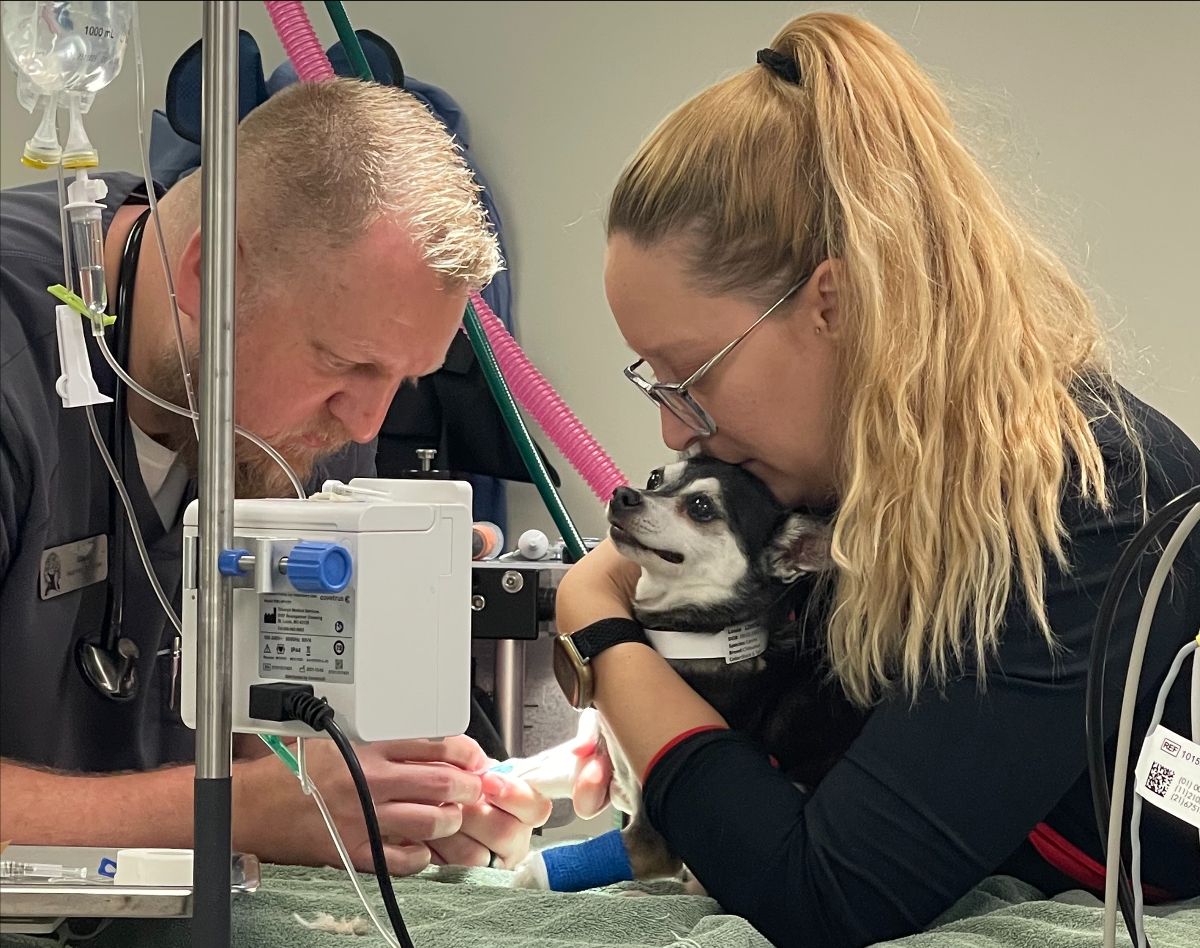
Every February, the American Veterinary Medical Association (AVMA) sponsors National Pet Dental Health Month. But the dental health of our pets should be a priority all year long! Approximately 70-80% of dogs and cats have developed dental disease by the age of three years. Let’s learn about the consequences of dental disease, what to expect from a professional dental procedure and options for at-home care.
Initially, a soft film of bacteria, called plaque, accumulates on the tooth surface. If not regularly removed, plaque hardens into calculus, causing irritation of the gums, or gingivitis. This cycle of infection and inflammation leads to progressive tissue destruction. Periodontal disease develops, compromising the underlying bone and deeper structures that support the tooth. This can cause not only tooth loss but has a negative impact on systemic health. Bacteria may enter the bloodstream damaging distant organs, like the kidneys, liver, lungs and heart. There are many hypotheses suggesting periodontal disease may promote and maintain systemic inflammation. One recognized example of this concept is diabetic patients. Chronic inflammation reduces the body’s sensitivity to insulin, making it difficult to control blood glucose levels.
Clinical signs of dental disease may include:
- Bad breath/halitosis
- Excessive drooling
- Broken or loose teeth
- Teeth that are discolored or covered in calculus
- Abnormal chewing or drooping food from the mouth
- Reluctance to eat or play with toys
- Bleeding/swelling in or around the mouth or face
You may find it surprising that most pets show few to no symptoms of dental discomfort. Dogs and cats are incredibly skilled at masking pain. Pets often live quietly with hidden periodontal disease for prolonged periods of time before it is addressed. It isn’t until after professional dental care that owners are able to appreciate the difference. We frequently hear similar feedback from our clients – “I wish I had done this sooner; they are acting like a puppy/kitten again!”
What is a COHAT?
COHAT stands for Comprehensive Oral Health Assessment and Treatment. When a COHAT is recommended by one of our veterinarians, it begins by determining your pet’s candidacy for general anesthesia with a pre-procedure physical exam and testing.
Anesthesia-free dentistry has been gaining popularity, but both the AVMA and The American Veterinary Dental College do NOT recommend dental cleanings without anesthesia because they do not allow cleaning or inspection below the gumline, where most dental disease occurs, and can result in injury to the pet or the person performing the procedure.
At a minimum, every patient has baseline bloodwork performed. Additional diagnostics may be indicated, and our veterinary team will make appropriate recommendations tailored to your pet’s health status. A dedicated surgical nurse is assigned to each patient, providing comprehensive monitoring of your pet throughout the COHAT.
- Intravenous catheter placement – provides easy access to administer medications as well as fluids that maintain blood pressure
- Pre-medications – injectable sedatives reduce pain and anxiety for your pet
- Endotracheal tube placement – delivers oxygen and anesthetic gas and protects the airway from aspiration
- Blood pressure, cardiac rhythm, heart & respiratory rates, blood oxygen levels and ventilation status are continuously measured
Once safely anesthetized, our veterinarians will perform a thorough oral exam and take dental radiographs, which are crucial to investigate for disease below the gumline. Commonly diagnosed conditions include:
- Fractured or abscessed teeth – Broken teeth can expose the pulp cavity, allowing bacteria to grow in the center & root of the tooth
- Tooth resorptive lesions – Commonly seen in cats, this condition involves erosion of dentin, which comprises the bulk of a tooth. The exact cause is not known and over time, the entire tooth may disintegrate.
- Oronasal fistulas – Advanced periodontal disease erodes away the tissue & bone separating the oral and nasal cavities; most commonly occurs with the maxillary canine (upper fang) teeth
- Malocclusion - Misalignment of the teeth can cause uneven wear and trauma to surrounding soft tissue and/or teeth
- Abnormal tissue growth – This can include both benign and malignant tumors, or gingival hyperplasia (excessive gum tissue)
- Jaw fractures – Severe periodontal disease can lead to pathologic breaks of the jawbone; most common in the lower jaw of toy/small breed dogs
- Crowded or extra teeth – Crowding is common in flat-faced breeds, who have compact oral cavities. Retained deciduous (baby) teeth are often found in small breed dogs. Both conditions create additional crevices that trap bacteria.
Calculus is removed with a high-speed ultrasonic scaler and the teeth are then polished. If dental extractions are indicated, local nerve blocks are performed to numb these areas. Other surgical procedures may include removal or biopsy of any abnormal tissue. If there is complicated or advanced disease, our veterinarians may suggest referral to a board-certified dental specialist.
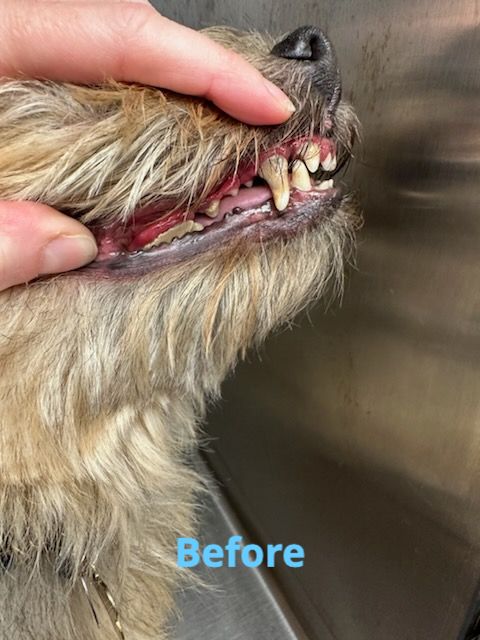
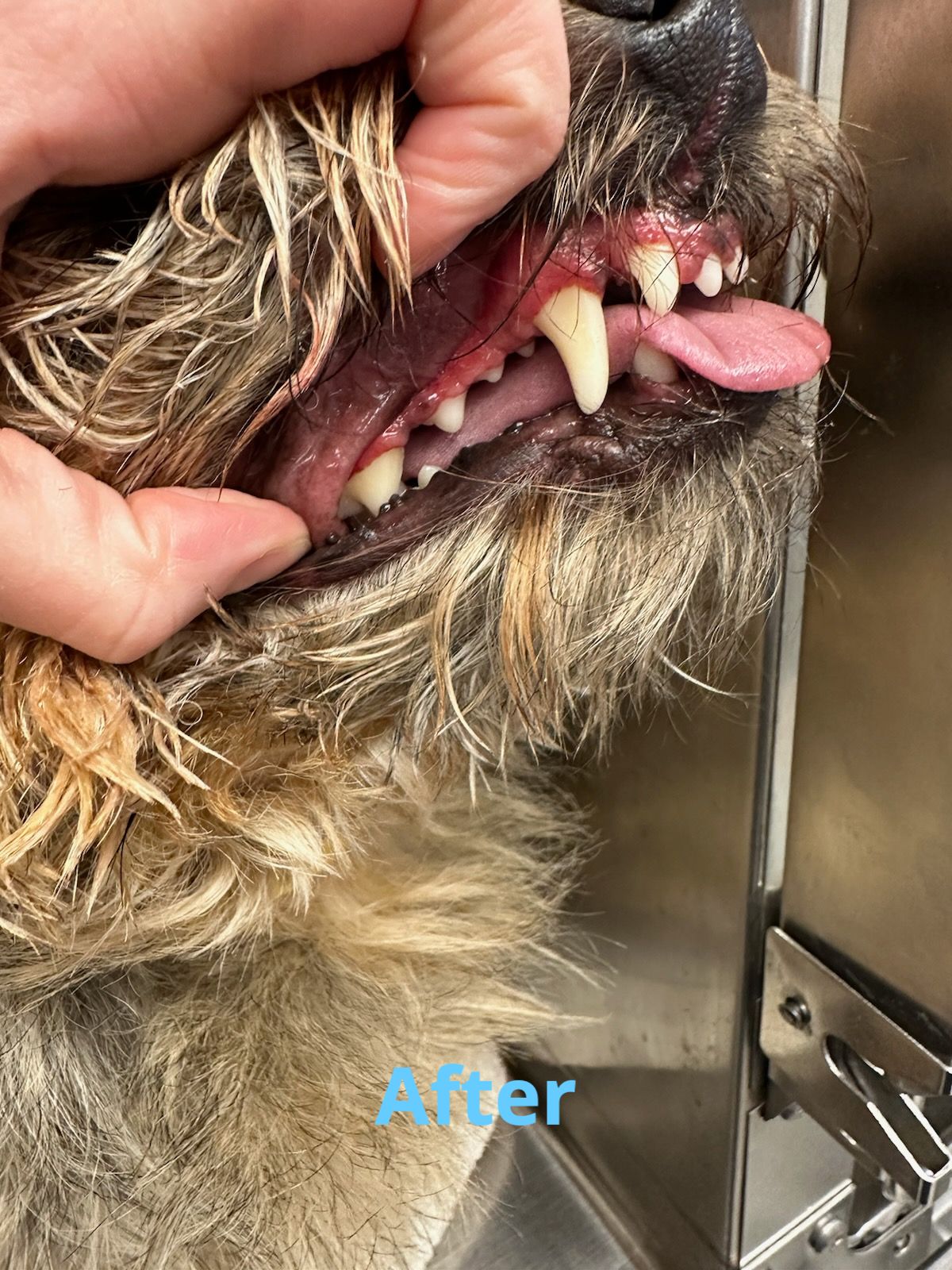
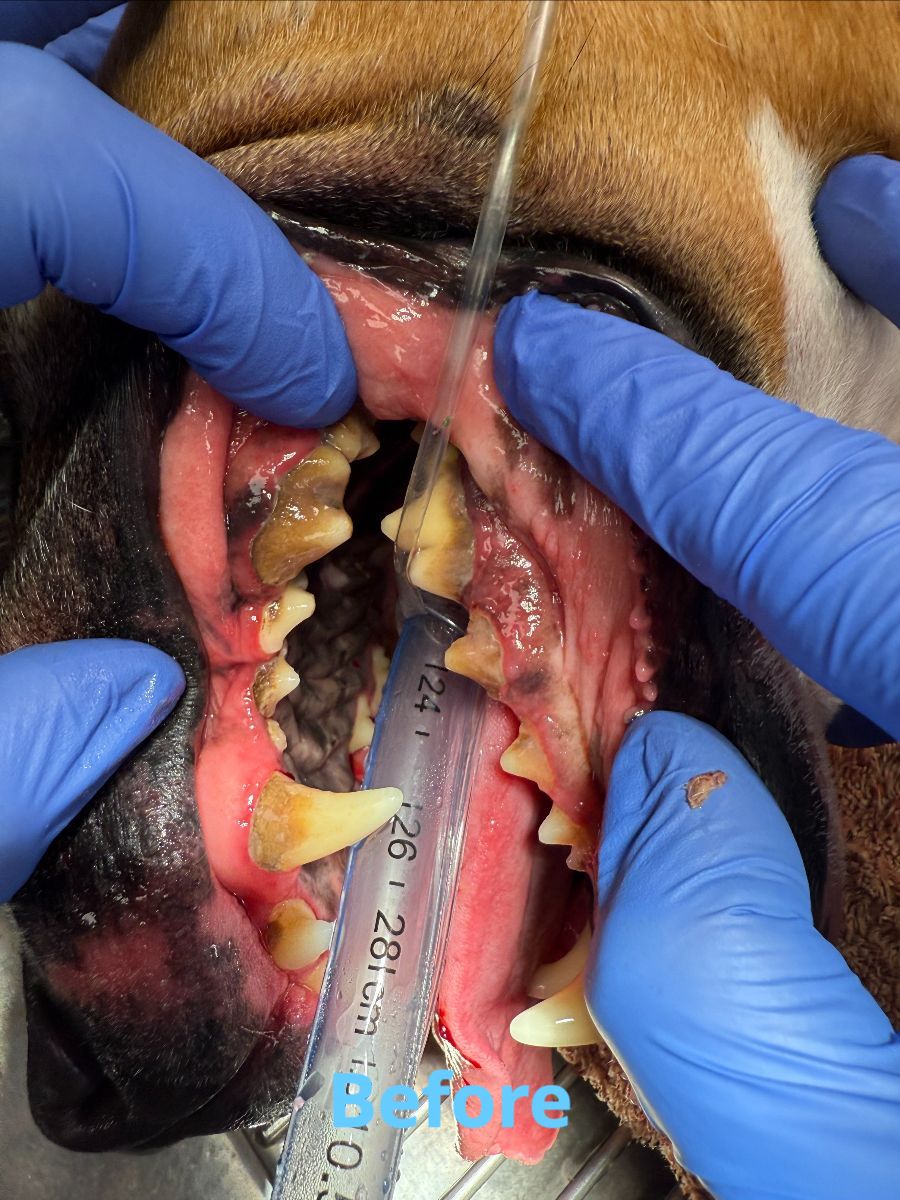
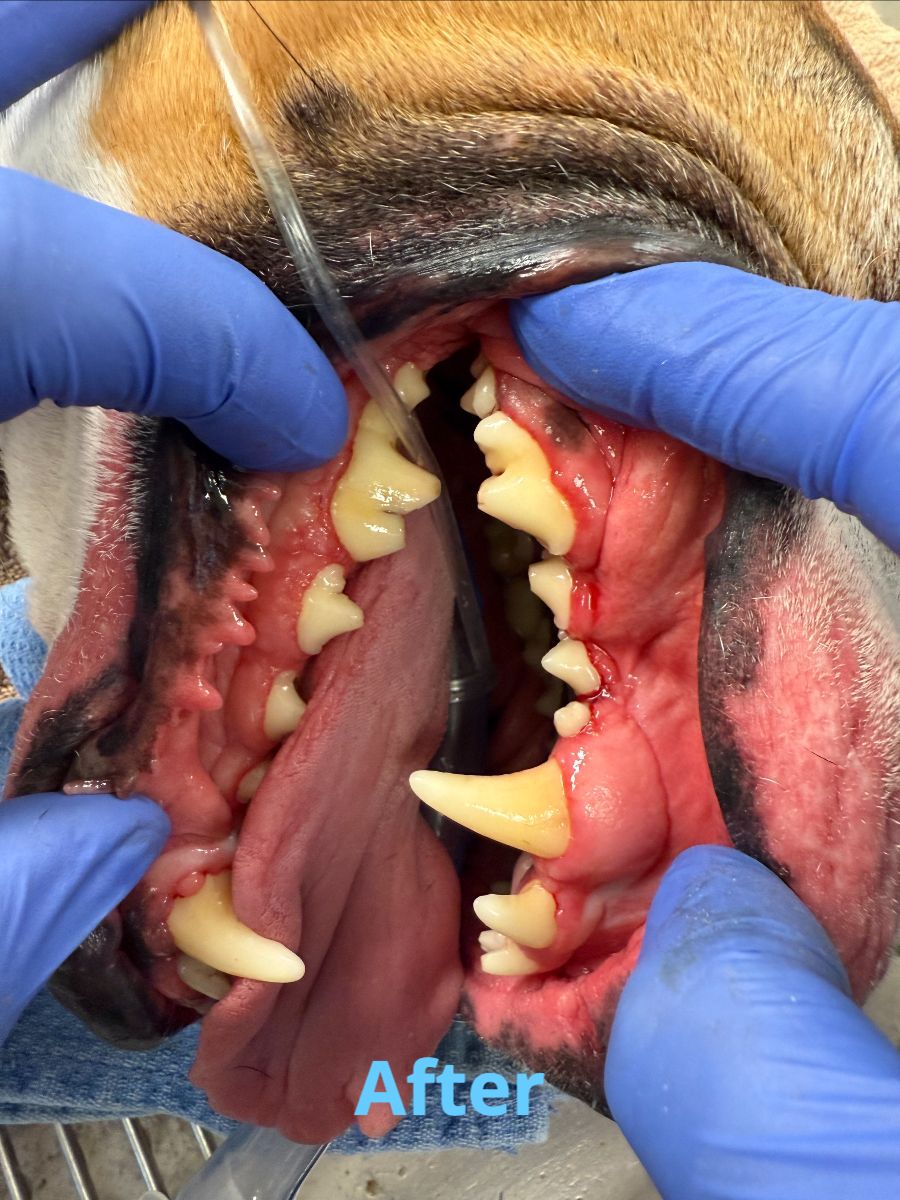
All patients are discharged the same day, with written instructions for their care. Soft food is recommended after a COHAT, especially if sutures were placed in the mouth. Animals may receive a combination of pain medications, anti-inflammatories and/or antibiotics for 1-2 weeks after the procedure. We will schedule a dental recheck (at no additional charge) to ensure your pet’s mouth has appropriately healed.
Home Dental Care
It is NEVER too late to start a home dental care routine for your pet! But it is important to recognize that these techniques are preventative in nature, and not treatment based. They are often most effective when only mild disease is present or after a COHAT.
- Brushing – This is considered the gold standard. Daily is best, but even 3 times weekly will be helpful! Never use human toothpaste as fluoride can cause GI upset.
- Water/food additives – These may be more readily accepted by dogs than cats, but a large variety of flavors are available.
- Chews/treats – It is essential that the proper size product for the pet’s body weight is offered. Supervising your pet during chewing activities is also recommended to prevent swallowing or obstruction.
- Prescription diet – Hill’s t/d diet has a unique kibble size, shape and texture designed to remove plaque, stains and tartar.
The Veterinary Oral Health Council (VOHC) reviews products against standards for effective plaque & tartar control. When used as directed, products that have been awarded the VOHC seal of acceptance will reduce the severity of periodontal disease. Click the following link for the complete list: Veterinary Oral Health Council | Finding the most effective route to good oral health for your dog or cat.
Dental disease can be easily overlooked by even the most observant of pet owners. Let the team at Upper Arlington Veterinary Hospital help you make an impact on your pet’s health. Whether it is scheduling a COHAT, or discussing prevention strategies, the best way to minimize the systemic effects of periodontal disease is to take a proactive approach!

